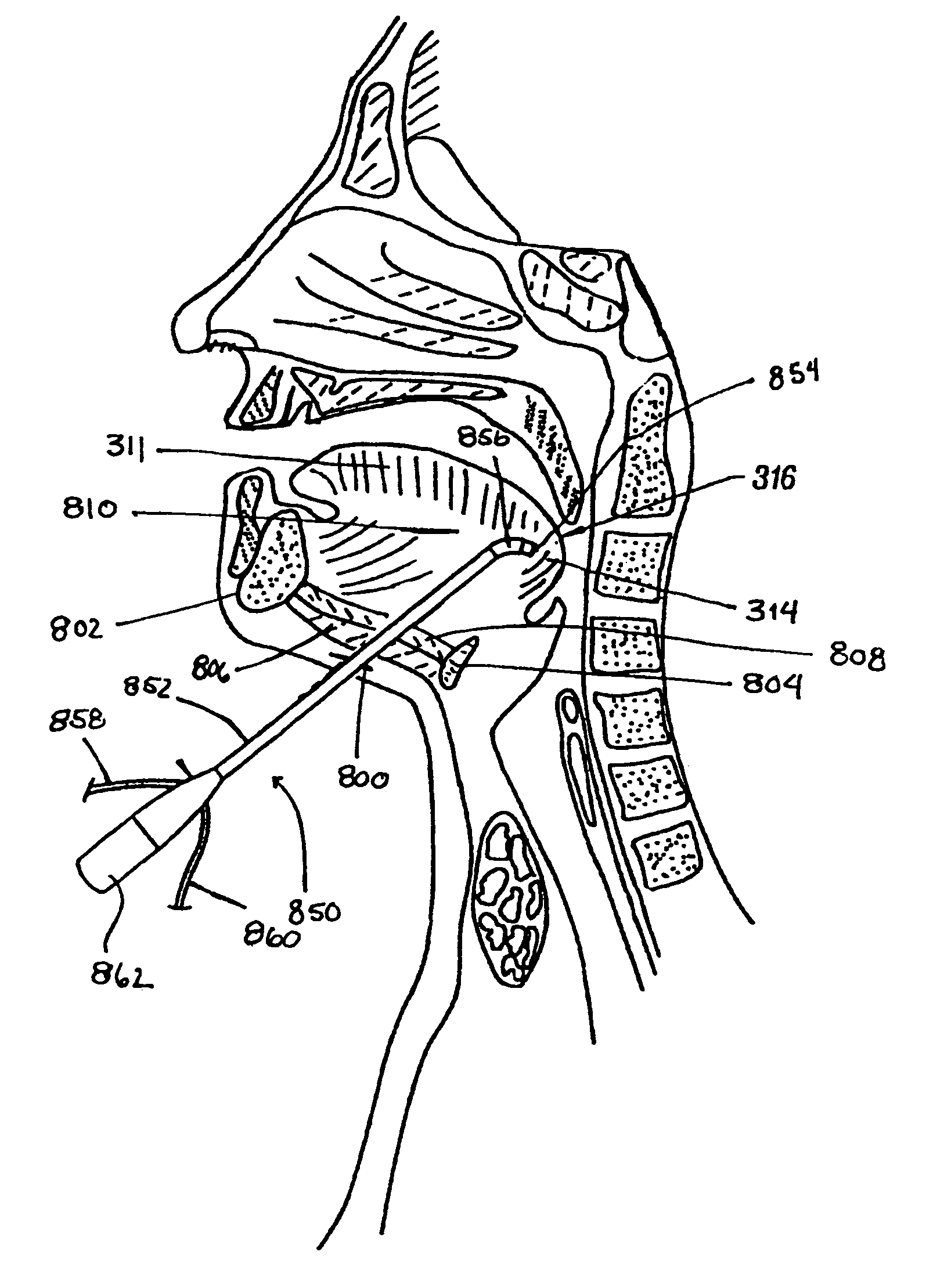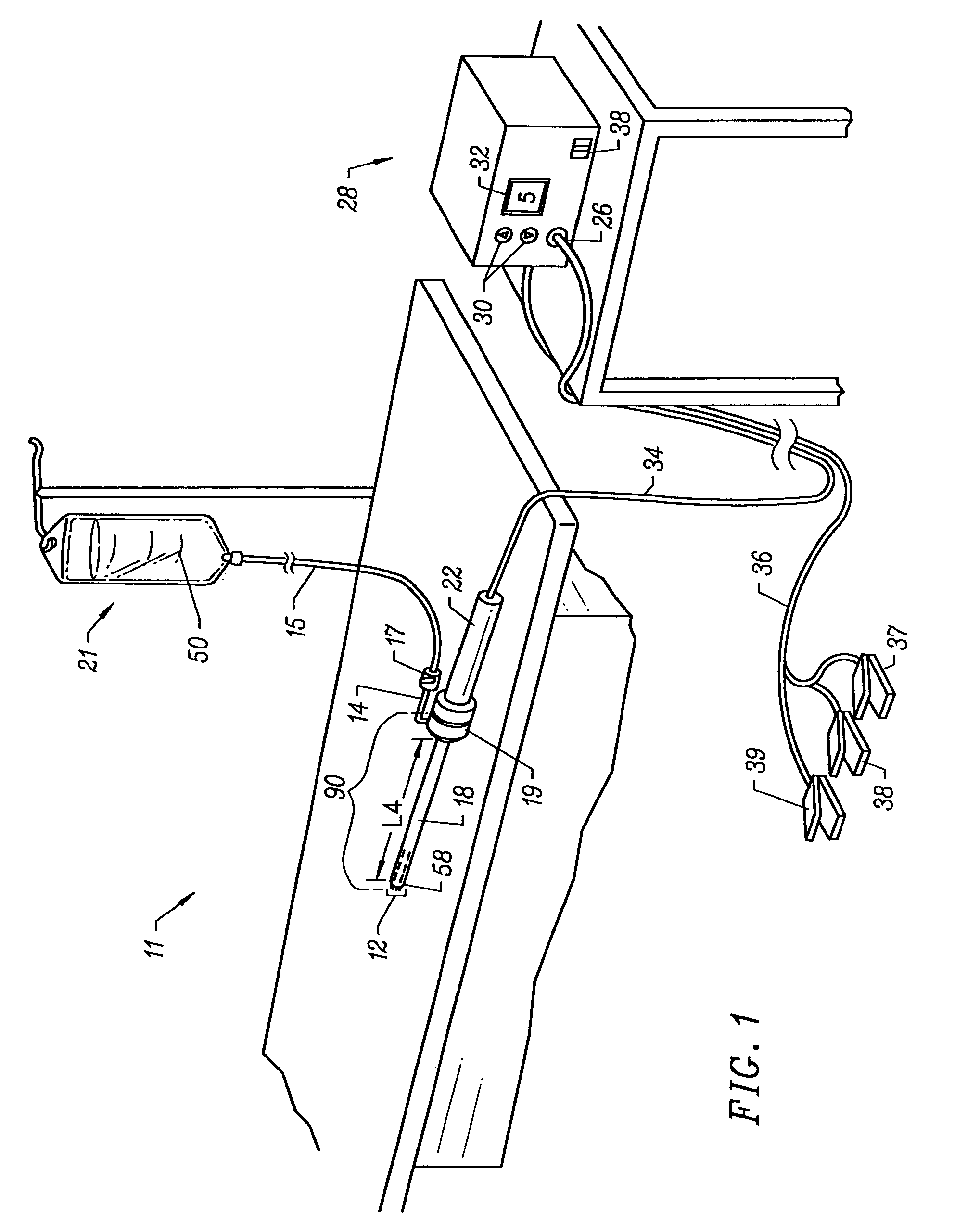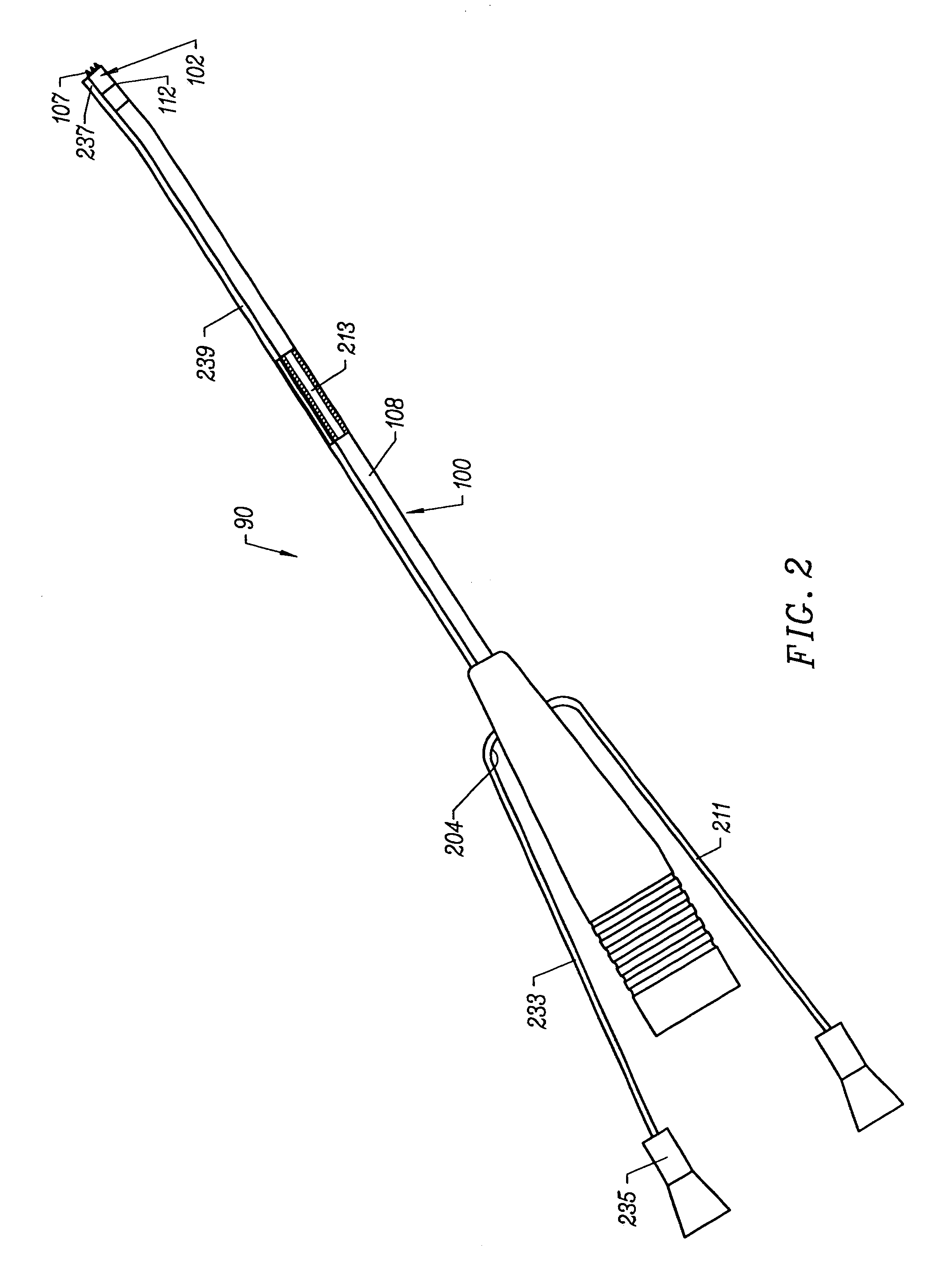Method for treating obstructive sleep disorder includes removing tissue from the base of tongue
a technology of obstructive sleep disorder and tongue, applied in the field of electrosurgical treatment, can solve the problems of creating hemostasis, stiffen and stiffening the tissue structure, and achieve the effect of stiffening the surrounding tissue structur
- Summary
- Abstract
- Description
- Claims
- Application Information
AI Technical Summary
Benefits of technology
Problems solved by technology
Method used
Image
Examples
Embodiment Construction
[0054]Before the present invention is described, it is to be understood that this invention is not limited to the particular embodiments described, and as such it may vary. It is also to be understood that the terminology used herein is for the purpose of describing particular embodiments only, and is not intended to be limiting, since the scope of the present invention will be limited only by the appended claims.
[0055]It must be noted that as used herein and in the appended claims, the singular forms “a”, “an”, and “the” include plural referents unless the context clearly dictates otherwise. Thus, for example, reference to “a test strip” includes a plurality of such test strips and reference to “the device” includes reference to one or more devices and equivalents thereof known to those skilled in the art, and so forth.
[0056]All publications and patents cited in this specification are herein incorporated by reference as if each individual publication or patent were specifically and...
PUM
| Property | Measurement | Unit |
|---|---|---|
| voltage | aaaaa | aaaaa |
| voltage | aaaaa | aaaaa |
| diameter | aaaaa | aaaaa |
Abstract
Description
Claims
Application Information
 Login to View More
Login to View More - R&D
- Intellectual Property
- Life Sciences
- Materials
- Tech Scout
- Unparalleled Data Quality
- Higher Quality Content
- 60% Fewer Hallucinations
Browse by: Latest US Patents, China's latest patents, Technical Efficacy Thesaurus, Application Domain, Technology Topic, Popular Technical Reports.
© 2025 PatSnap. All rights reserved.Legal|Privacy policy|Modern Slavery Act Transparency Statement|Sitemap|About US| Contact US: help@patsnap.com



